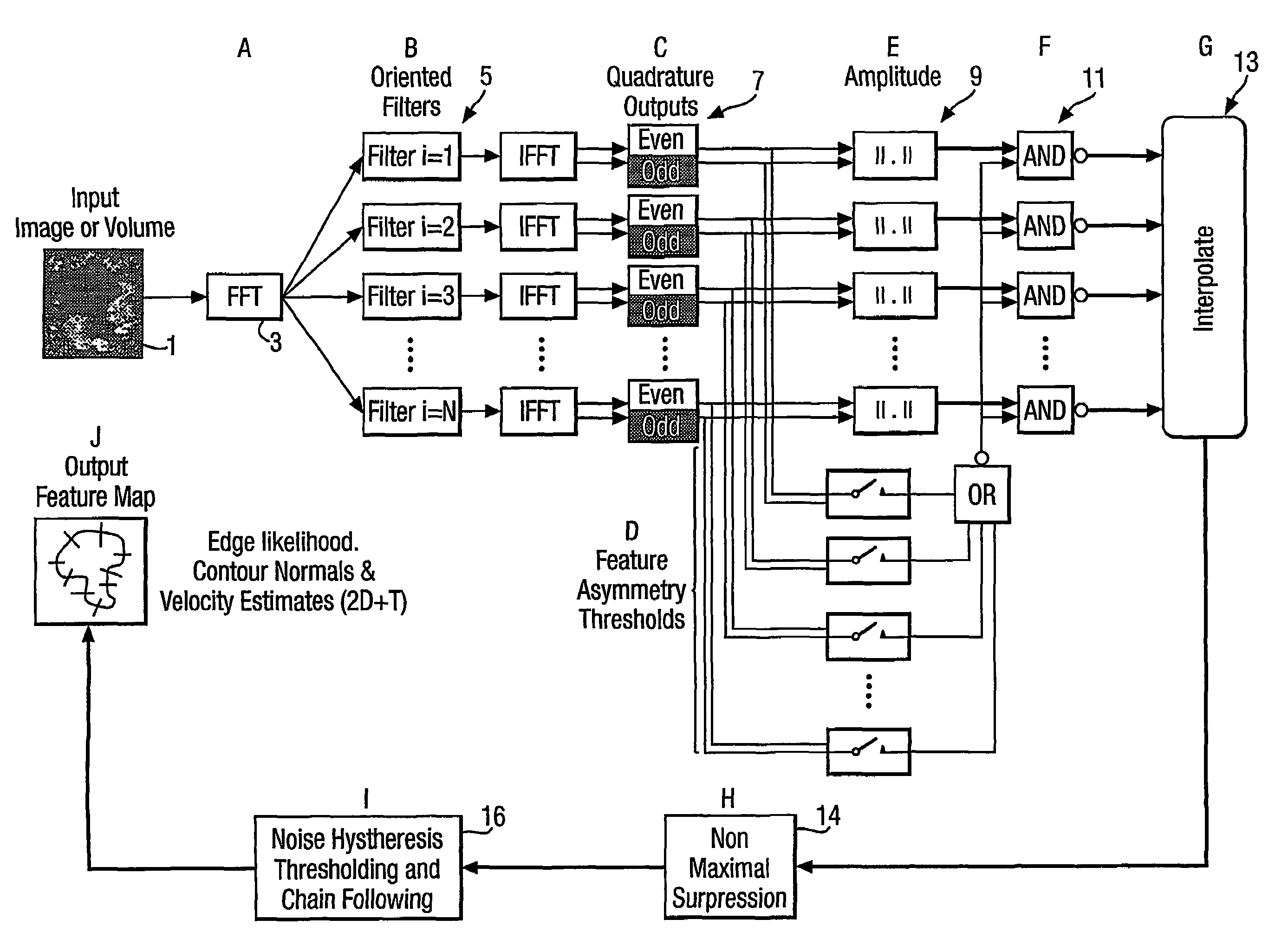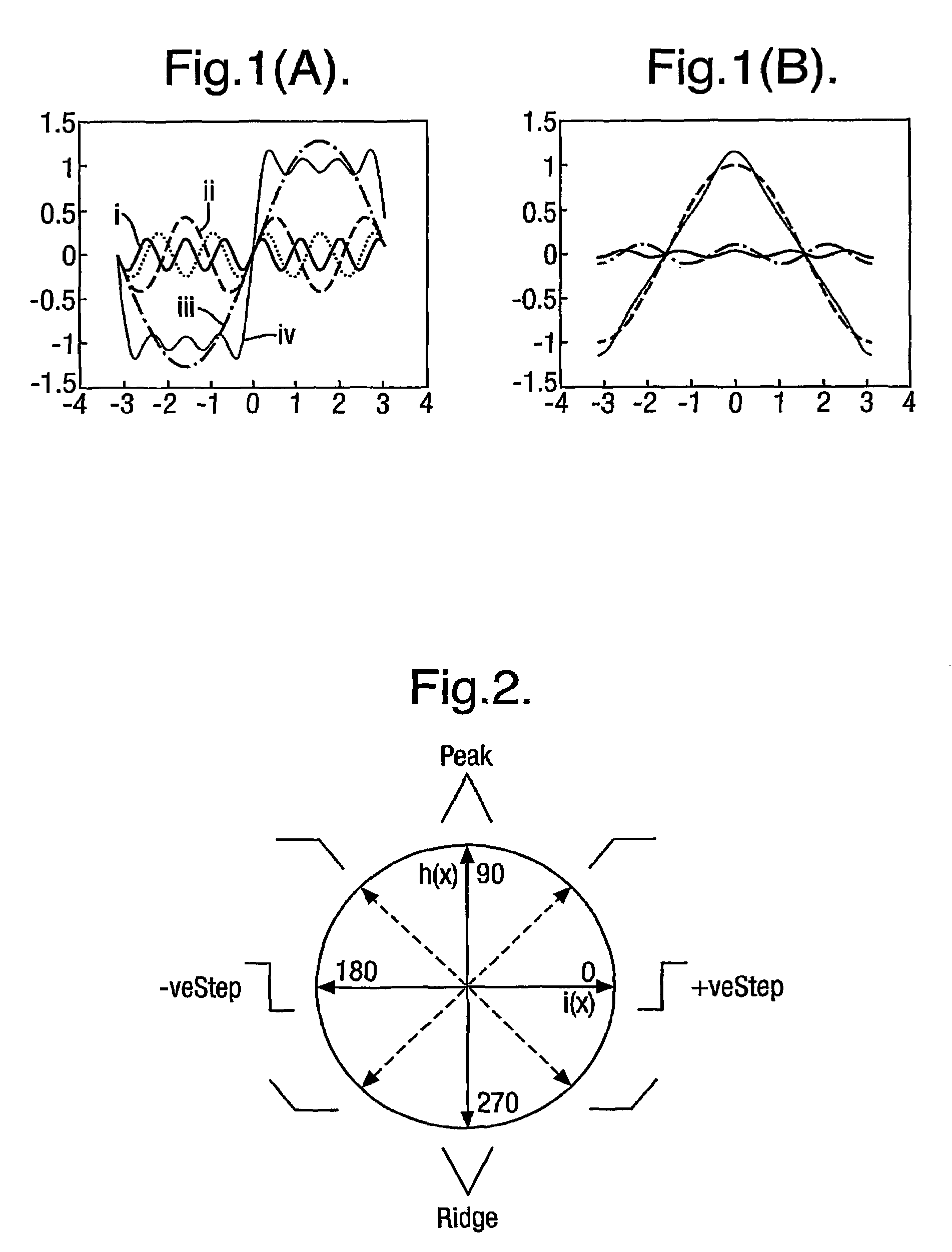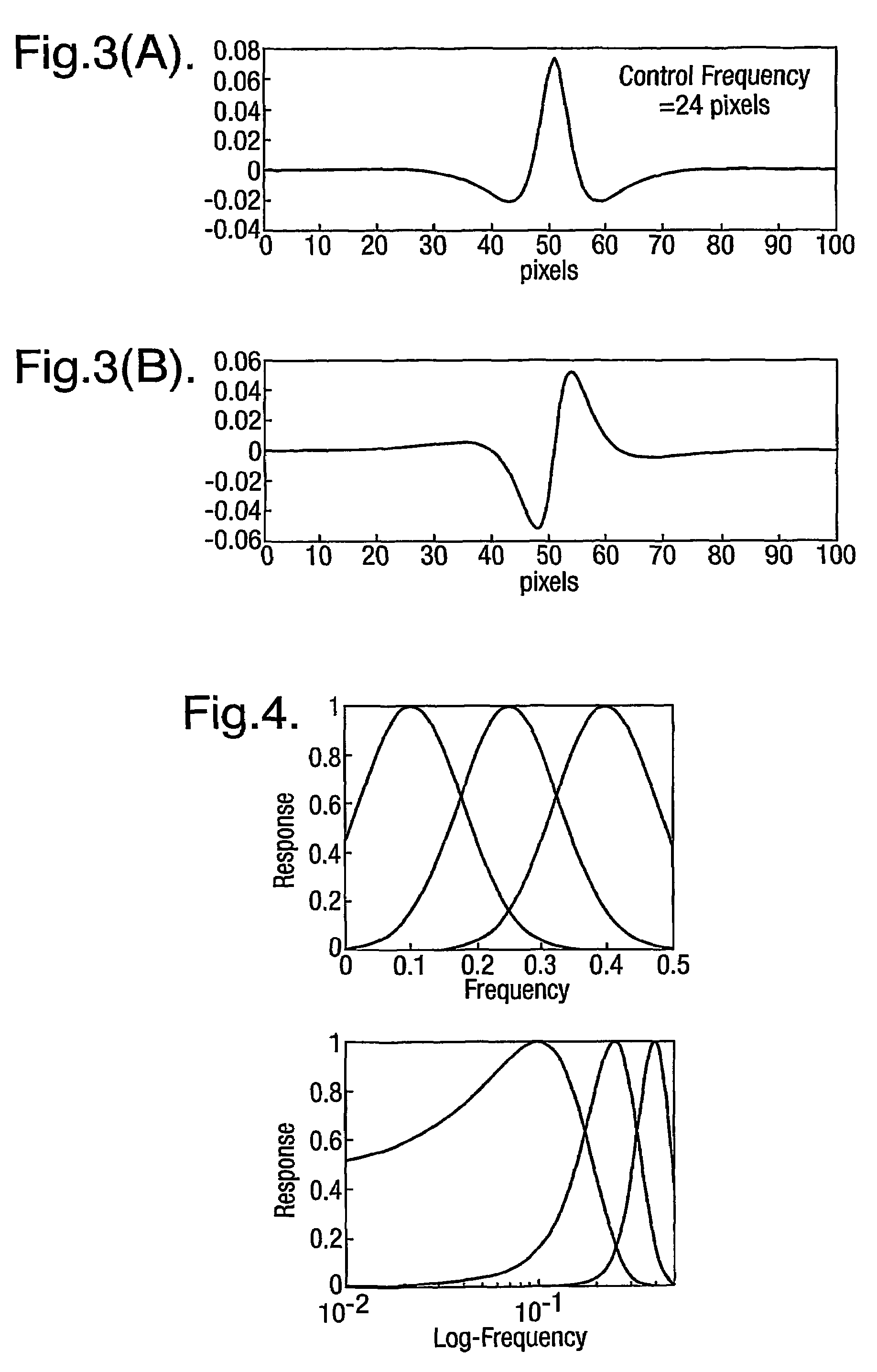Detection of features in images
- Summary
- Abstract
- Description
- Claims
- Application Information
AI Technical Summary
Benefits of technology
Problems solved by technology
Method used
Image
Examples
Embodiment Construction
[0035]While traditional methods for detection of a step edge in an intensity profile rely on examining the derivatives of the intensity profile (i.e. its slope), to detect the sudden changes in intensity which mark the visible edge of features in the image, this embodiment of the invention examines a decomposition of the intensity profile in the spatial or spatio temporal frequency domains. For instance, FIG. 1 illustrates Fourier decompositions of a step edge (FIG. 1(a)) and a triangular function (FIG. 1(b)). In FIG. 1(a) it can be seen that three sinusoidal components i, ii and iii sum to make an approximation to a step edge iv. Further it will be noted that the phase of all three components is the same, zero, at the positive-going step edge. Further the phase value of all the components at the negative step edge is 180 degrees. Reference to FIG. 1(b) illustrates that for a triangular peak the phase value of all of the Fourier components is 90 degrees at the peak of the triangle.
[...
PUM
 Login to View More
Login to View More Abstract
Description
Claims
Application Information
 Login to View More
Login to View More - R&D
- Intellectual Property
- Life Sciences
- Materials
- Tech Scout
- Unparalleled Data Quality
- Higher Quality Content
- 60% Fewer Hallucinations
Browse by: Latest US Patents, China's latest patents, Technical Efficacy Thesaurus, Application Domain, Technology Topic, Popular Technical Reports.
© 2025 PatSnap. All rights reserved.Legal|Privacy policy|Modern Slavery Act Transparency Statement|Sitemap|About US| Contact US: help@patsnap.com



